Fairies of the Wood
I began visiting a Roe deer site in August, just as the rutting season was in full flow. The month began hot and dry, but gave way to cooler conditions, with frequent heavy rain. Parched grass and rock hard ground once again became lush and soft. I had a great deal of trouble adjusting from the Mediterranean weather of June and July, to an unsettled and cool August.
I wouldn't have been able to compile these images without the assistance of my electric bike, which has significantly cut journey times and brought deep rural sites within easy reach. The bike is worth every penny, given its light weight, good components, 70 mile range and smooth assistance thanks to the Bosch torque sensor. I can leave the woods and arrive at the station 11 minutes later to catch an early train. I'm home just 3 minutes after I leave Brighton station. Keeping fit is not compromised by electrical assistance, as I cycle with 18kg of equipment and frequently cruise above the 15.5 mph assisted limit. The 20kg bike and 18kg equipment also has to be carried up steps at railway stations. My ethos is strongly influenced by Dutch culture, where cycling is seen as a safe, green and healthy activity and the climate of fear about helmets is absent. It's a fun and healthy way to get around for any artist, who cares about the environment they love photographing.
Having discovered a versatile site where the presence of Roe deer in woodlands and meadows can be virtually guaranteed and disruption is unlikely, I now have the opportunity to tell a story about these beautiful animals over four seasons.
I wouldn't have been able to compile these images without the assistance of my electric bike, which has significantly cut journey times and brought deep rural sites within easy reach. The bike is worth every penny, given its light weight, good components, 70 mile range and smooth assistance thanks to the Bosch torque sensor. I can leave the woods and arrive at the station 11 minutes later to catch an early train. I'm home just 3 minutes after I leave Brighton station. Keeping fit is not compromised by electrical assistance, as I cycle with 18kg of equipment and frequently cruise above the 15.5 mph assisted limit. The 20kg bike and 18kg equipment also has to be carried up steps at railway stations. My ethos is strongly influenced by Dutch culture, where cycling is seen as a safe, green and healthy activity and the climate of fear about helmets is absent. It's a fun and healthy way to get around for any artist, who cares about the environment they love photographing.
Having discovered a versatile site where the presence of Roe deer in woodlands and meadows can be virtually guaranteed and disruption is unlikely, I now have the opportunity to tell a story about these beautiful animals over four seasons.
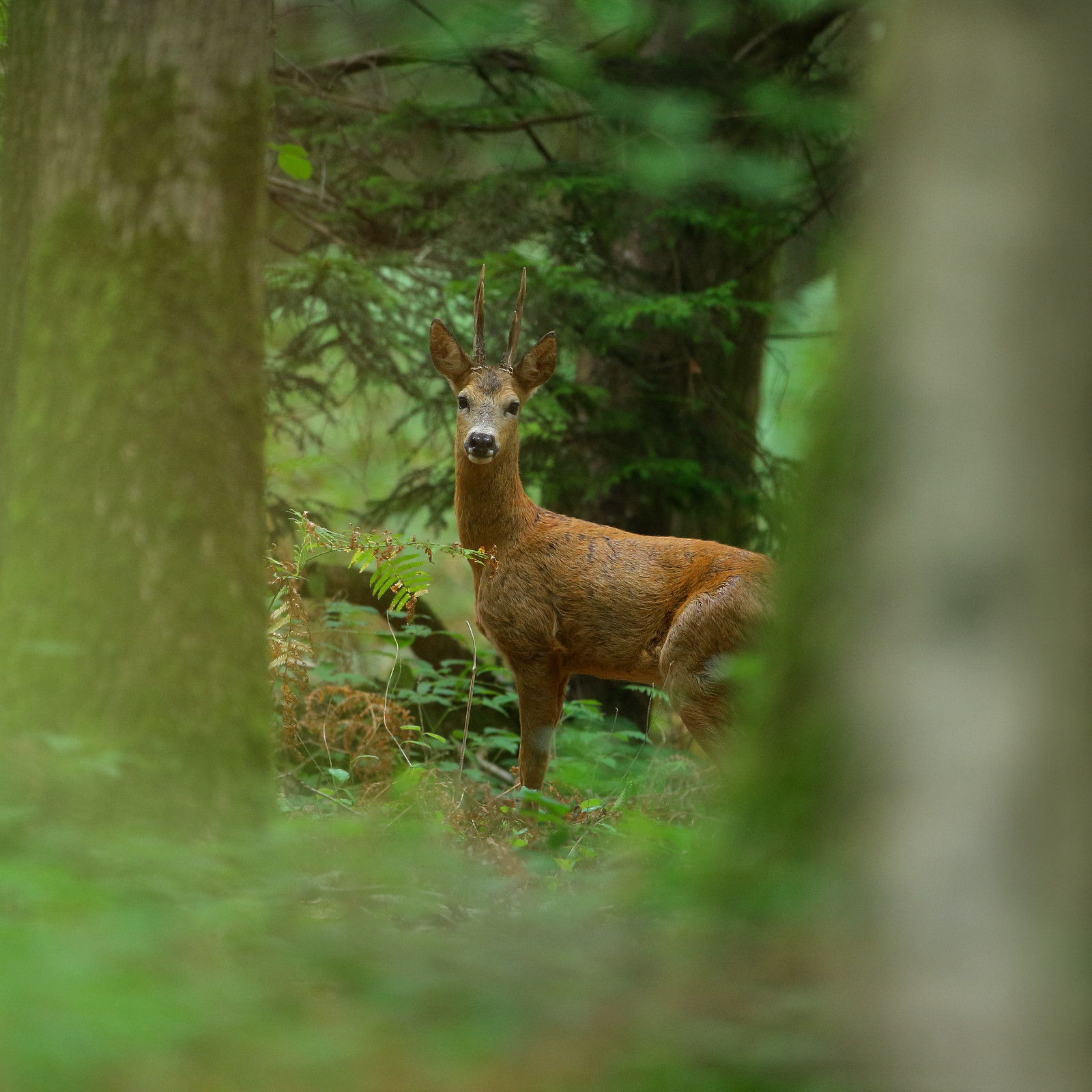
This is the least tolerant buck on the site. He will stand for long enough to get a few shots, but he doesn't like being photographed. I would say he's five years old. There are about 15 Roe deer on the site at present. Roe bucks are territorial, so it's a simple matter of visiting a particular field or corner of the woodland to find a particular deer. During the rutting season, it's common to see an accompanying doe and her kids nearby. From late September to April, Roe deer live in small groups. They are solitary from April to mid-July, when they court until mid-August.

I spotted twin baby Roe deer grazing at the edge of a field, away from their mother. They were 3 months old at the time. One of the babies just couldn't resist coming forward to find out what was causing that clicking noise. Roe deer are naturally curious, but all too often, their timidity prevents this side from being observed. This deer shares genes with other tolerant roe at the site and took an interest in the giant eye pointing in his/her direction. The mild tolerance of this young deer and relatives would prove insignificant in comparison to a quite unique Roe deer I was to encounter later in August.
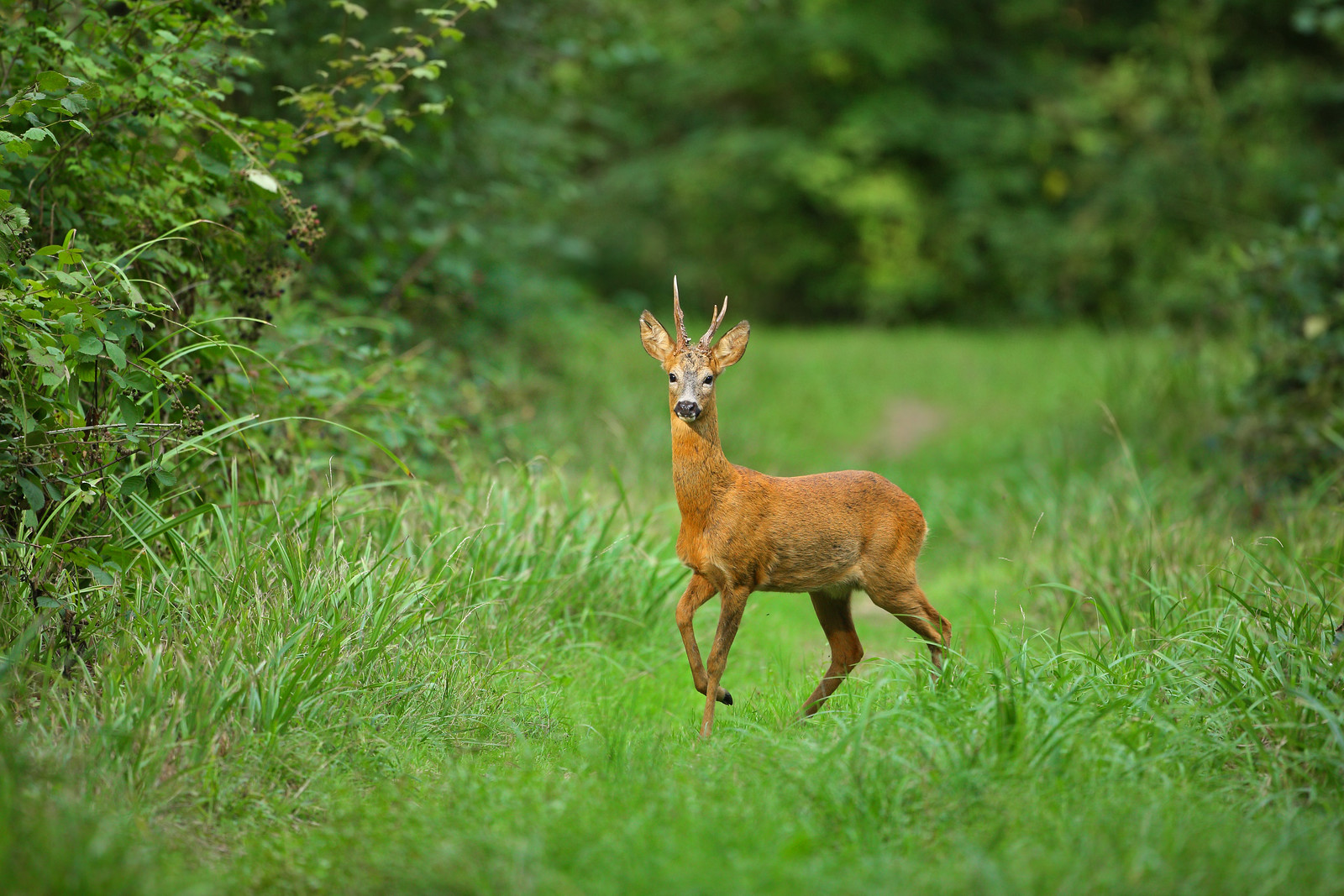
The
appearance of two horses startled this buck into escaping down a
woodland glade. He quickly forgot about the horses and spent about 10
minutes eating juicy blackberries. Roe deer never fully cease observing
their surroundings and the buck eventually spotted a stationary figure
pointing a giant eye in his direction. Instead of bolting, he stared at
me for a couple of minutes, before curiosity got the better of him and
he walked in a spider-like fashion towards a shaft of sunlight. He would
normally expect humans to take only a cursory interest in him, so my
unusual behaviour prompted further investigation. I was glad the
encounter didn't alarm him, as they sometimes bark, but the deer just
wandered off after a couple of minutes.
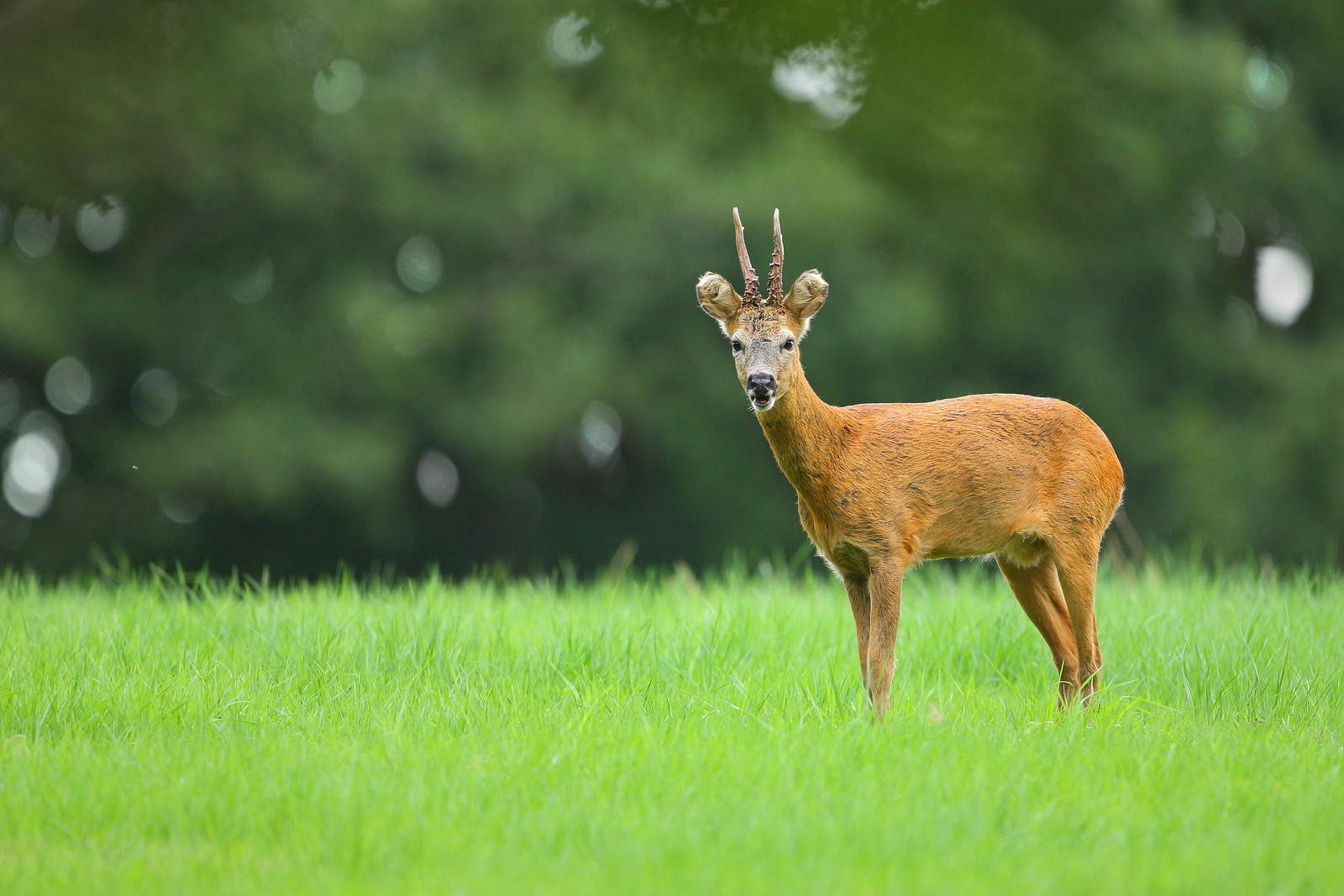
This buck sleeps in roughly the same place every day. The first thing I noticed was his unusually small ears, which look like they've been taken from another mammal or even a teddy bear. I would estimate he is two years old. He is the most tolerant buck on the site and will remain in situ or even go back to sleep if I refrain from any provocative behaviour. In the photo, he is yawning and stretching after getting up. The tolerant behaviour of Roe deer at this site is partly genetic. Most roe deer bolt immediately, but if I spot one tolerant deer, then others nearby will likely be related and their behaviour profile similar. I've noticed that the most tolerant Roe deer tend to live at sites with low numbers of human visitors, where people treat the countryside with love and respect. Local people here are very friendly and I often stop to have a chat about the deer, buzzards and barn owls living nearby.
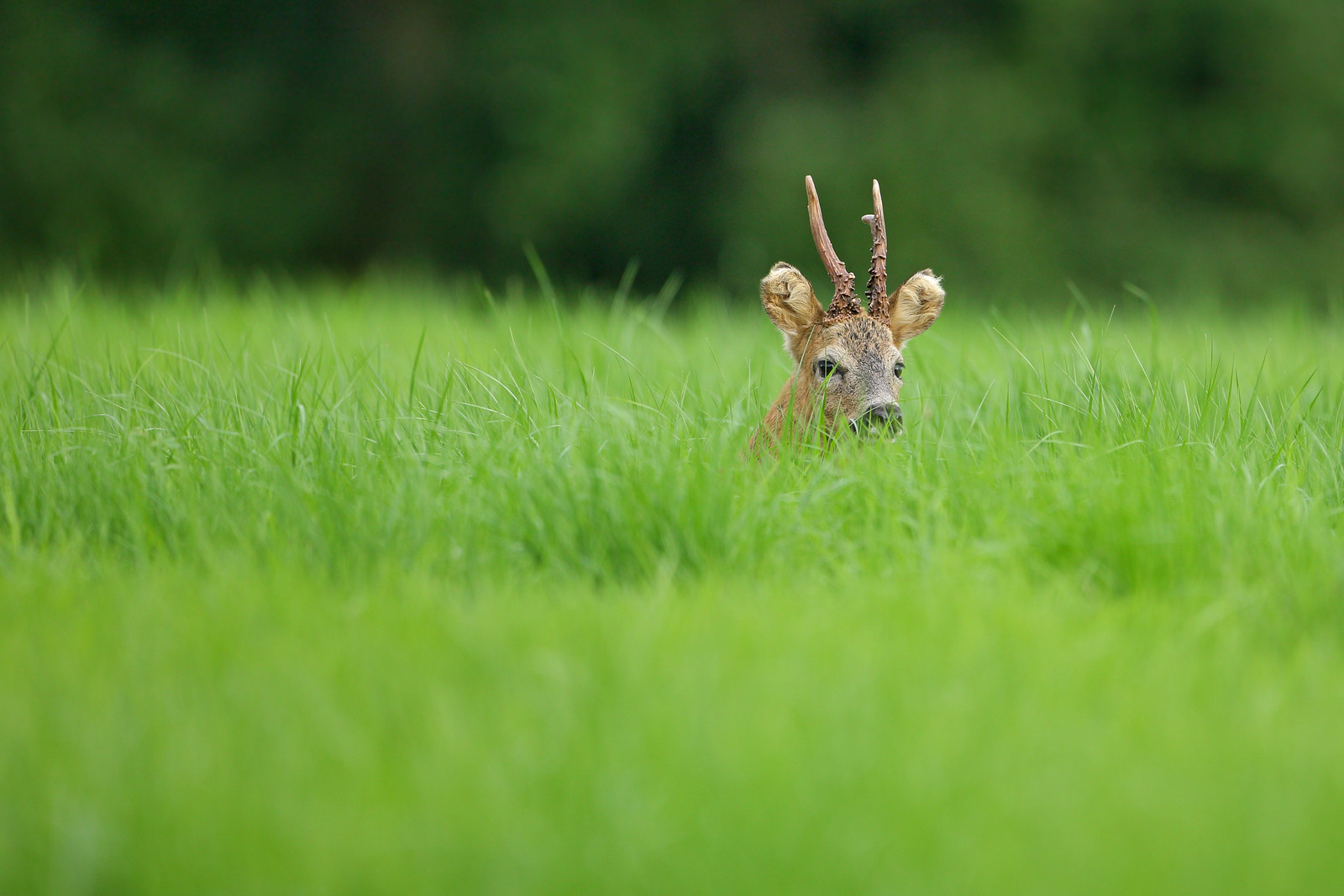
I returned in late August and enjoyed a wonderful series of encounters with the tolerant buck and his attendant doe. The buck allowed me to photograph him from a distance of about 30 - 40 metres and his behaviour ranged from indifferent to slightly watchful. Provided I respected his boundaries, he accepted my close presence. When Roe deer are alarmed, the hairs on their bottom are raised, but it is clear from my images that he doesn't see me as a threat. I look forward to re-visiting this field over the next year, as there is clearly a story to be told about the deer's life.
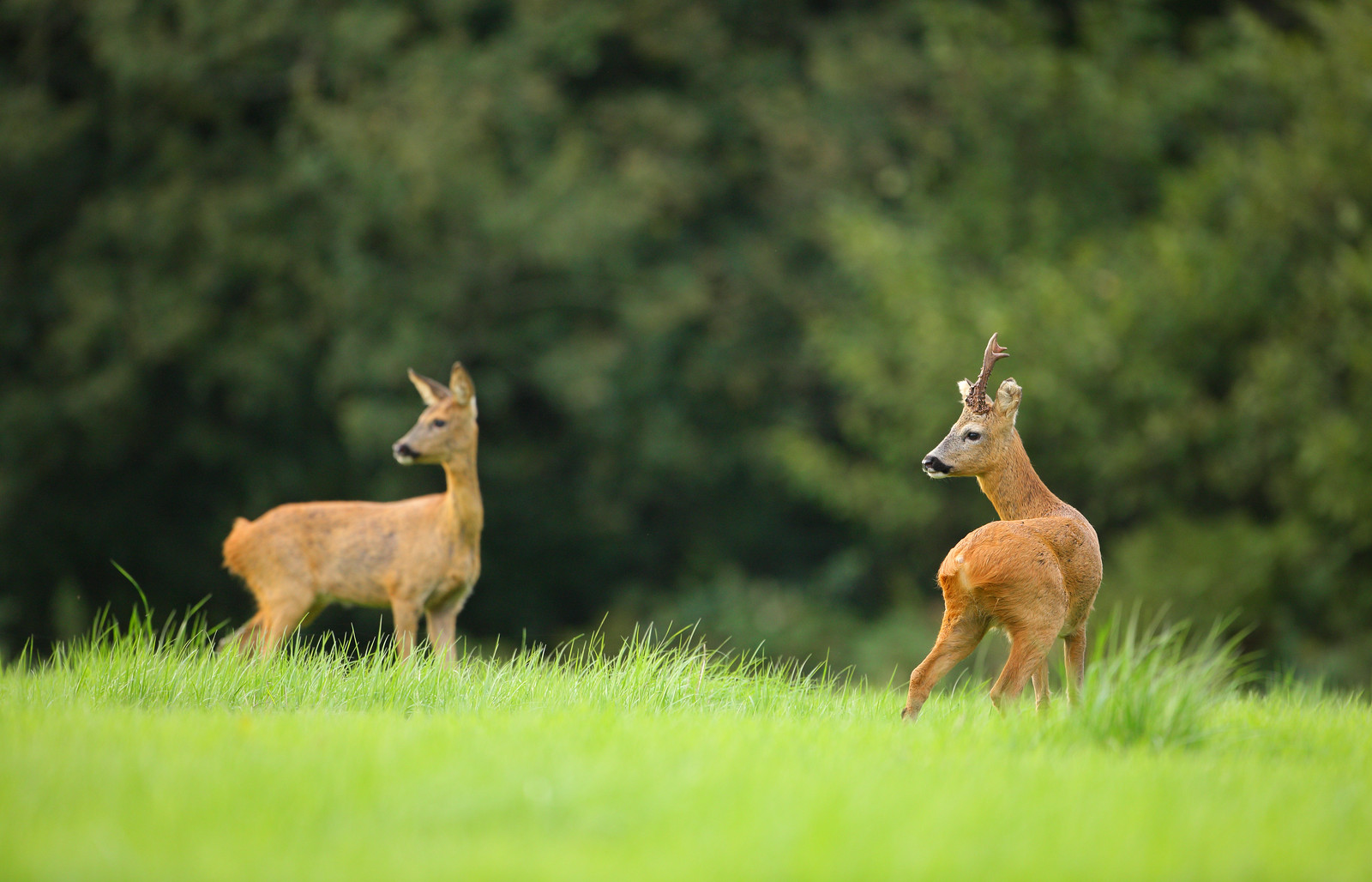

I returned in late August and enjoyed a wonderful series of encounters with the tolerant buck and his attendant doe. The buck allowed me to photograph him from a distance of about 30 - 40 metres and his behaviour ranged from indifferent to slightly watchful. Provided I respected his boundaries, he accepted my close presence. When Roe deer are alarmed, the hairs on their bottom are raised, but it is clear from my images that he doesn't see me as a threat. I look forward to re-visiting this field over the next year, as there is clearly a story to be told about the deer's life.

The pair are observing a group of passing horse riders. The doe's rear hairs are raised, indicating a degree of alarm, but she became more relaxed when the riders disappeared. I spent 30 minutes observing the deer and noticed that the doe in particular frequently fixed her gaze at unknown sources of interest. The buck's unwillingness to depart from the field is partly driven by a desire to defend his territory and attract passing does.
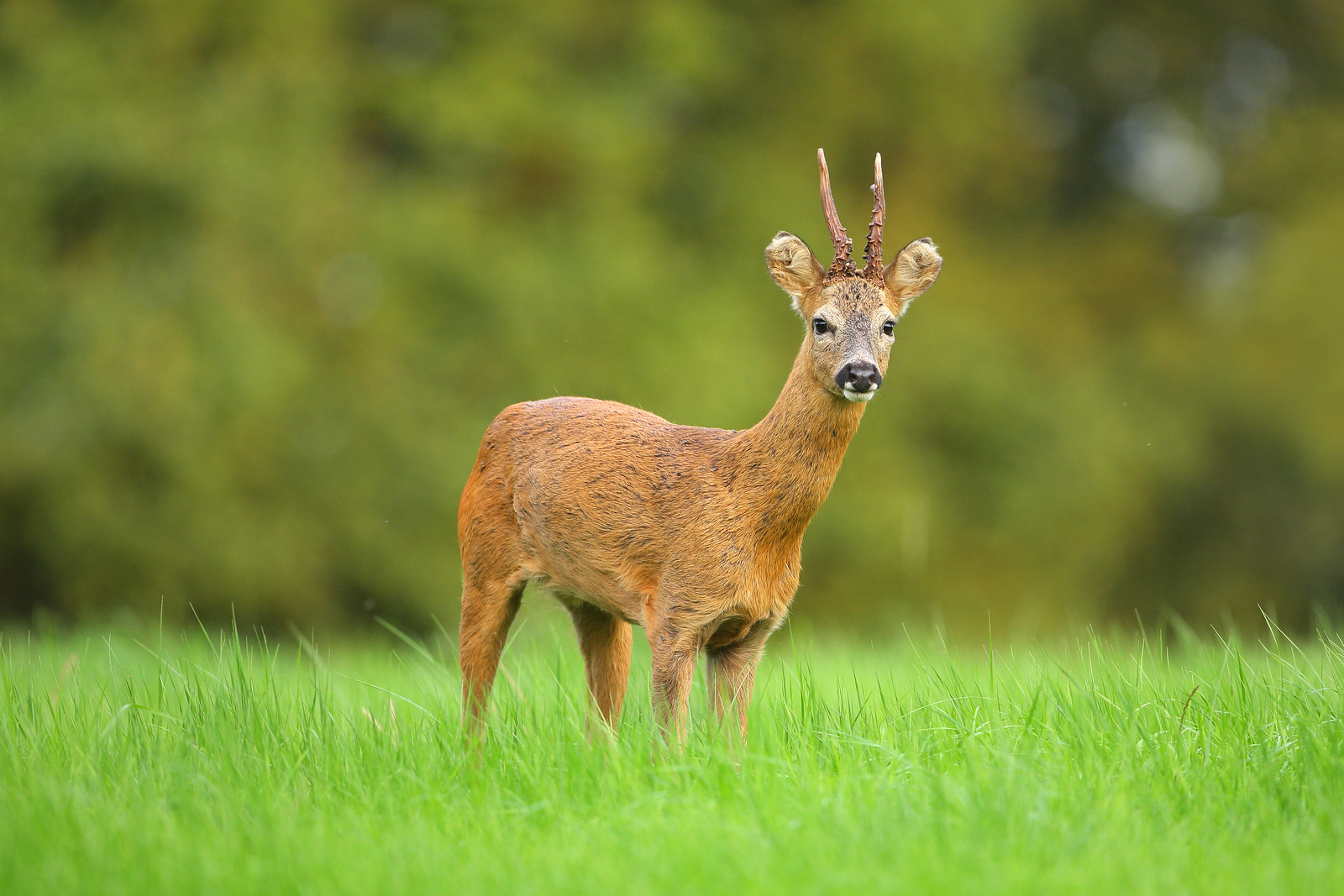
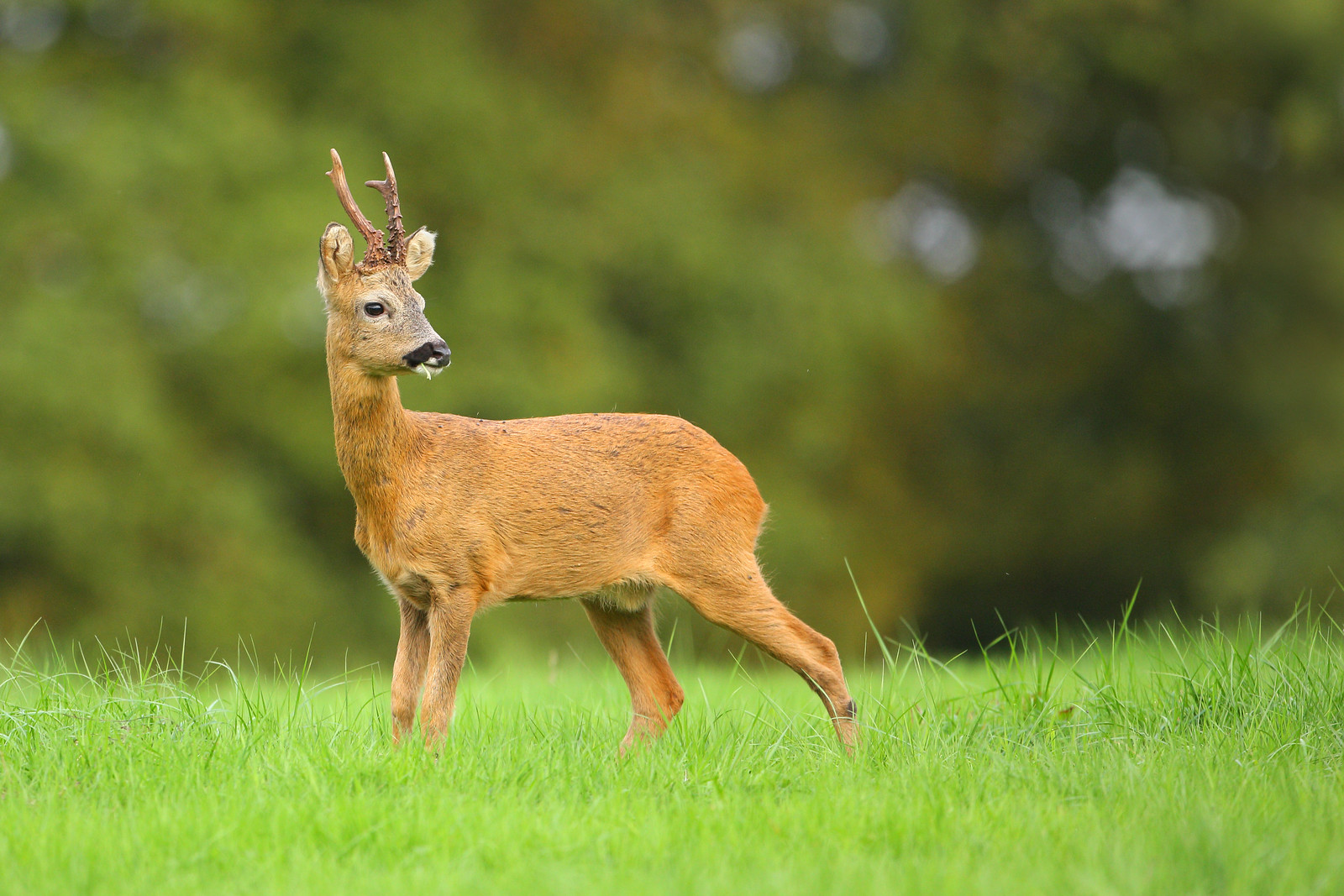
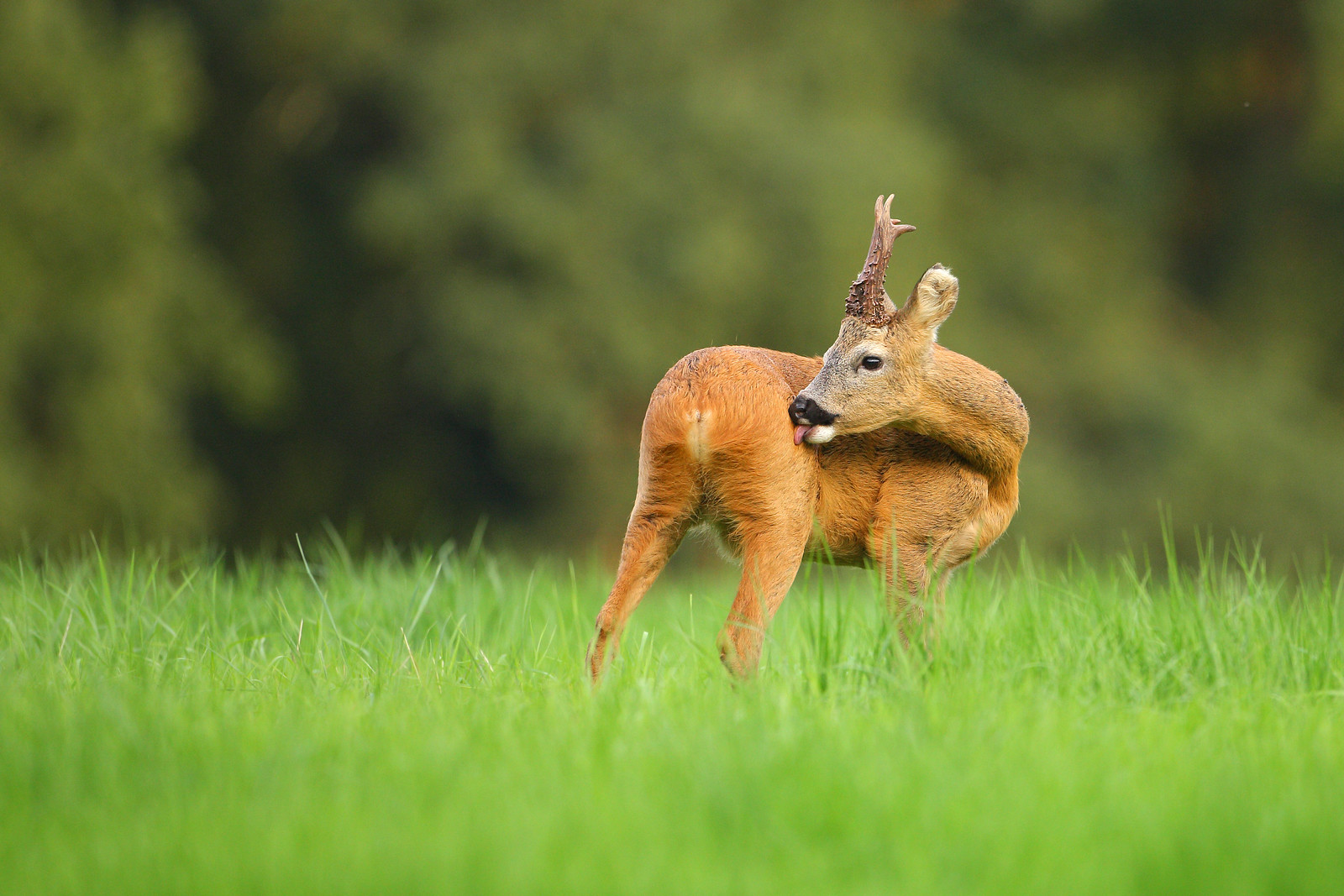

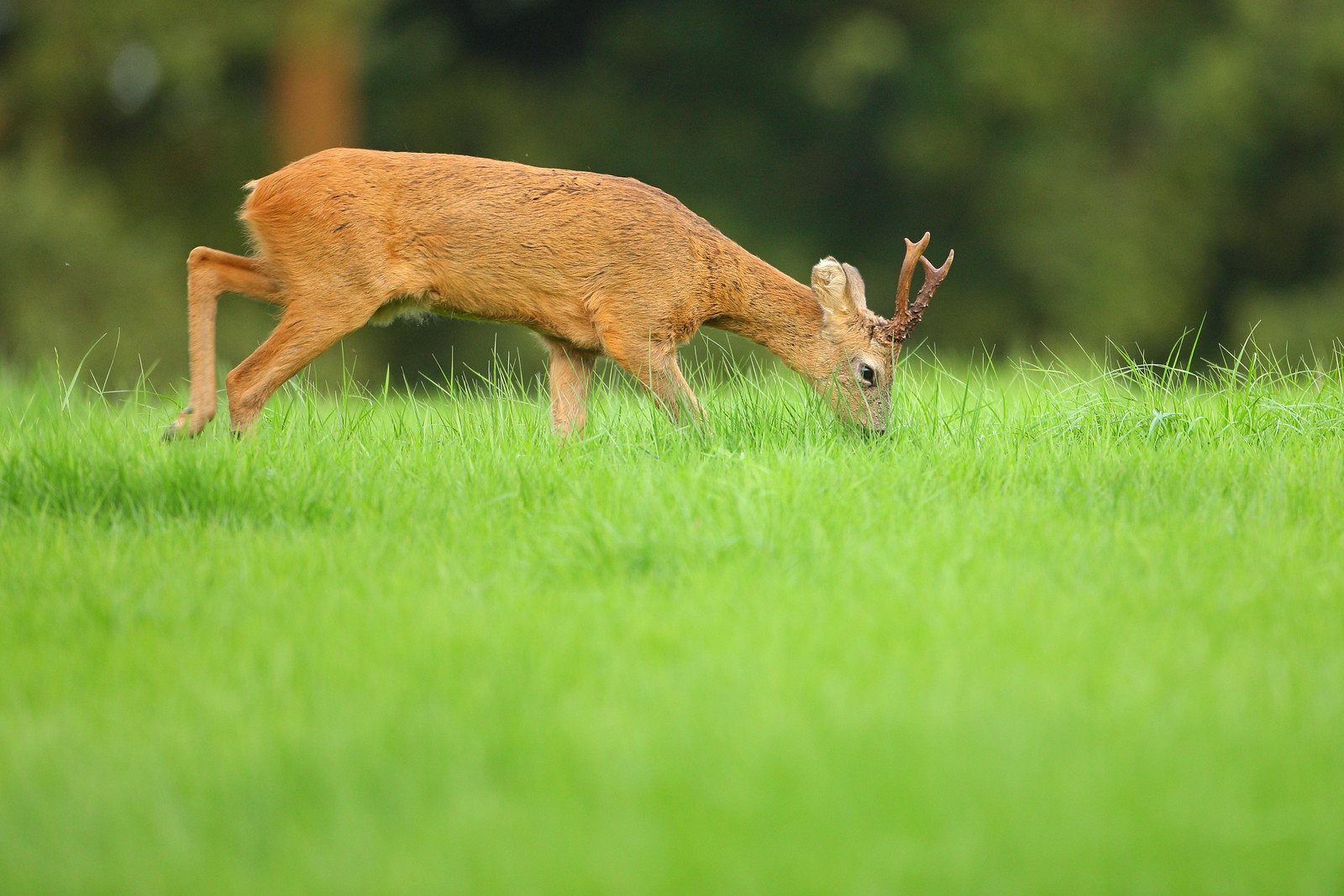
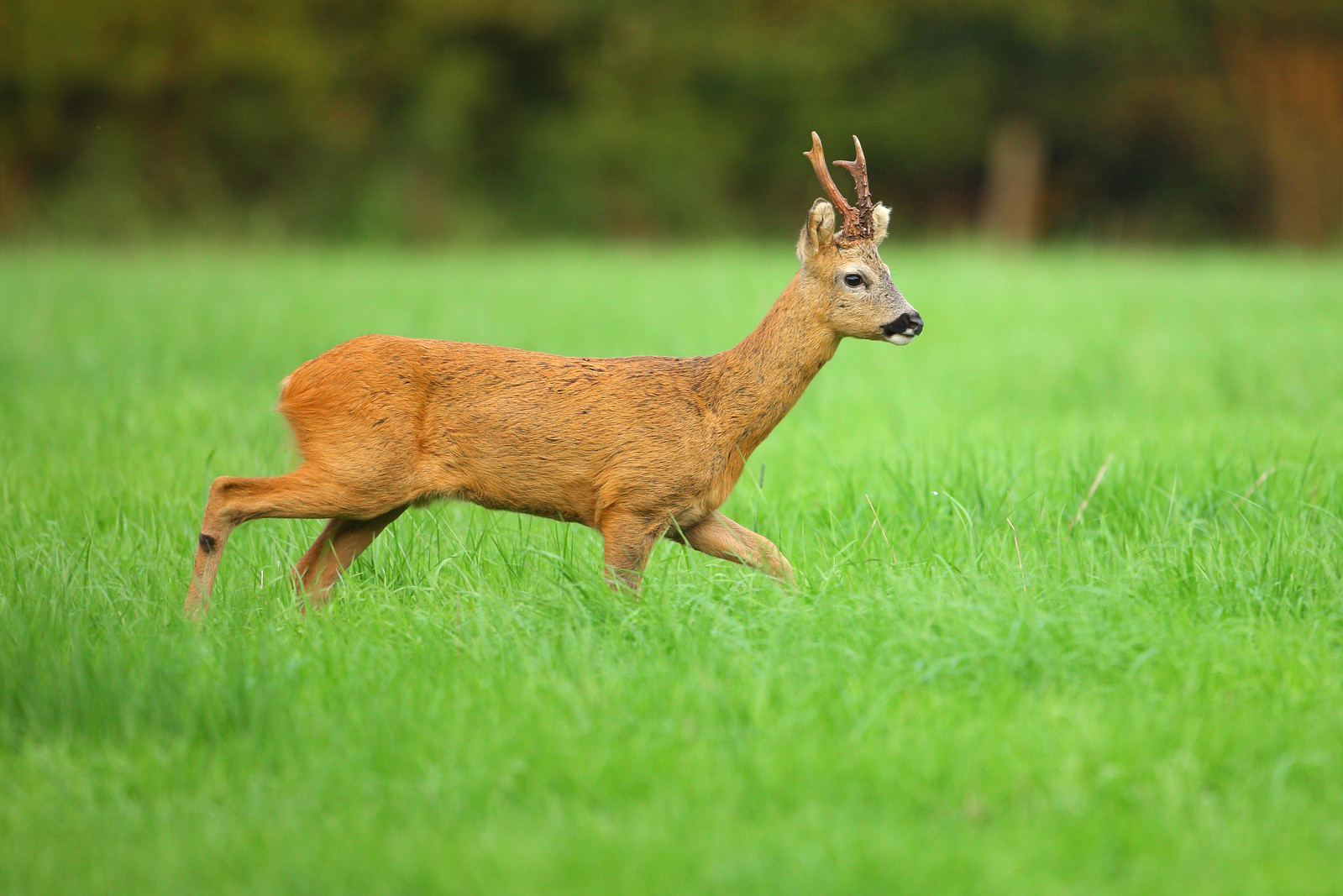
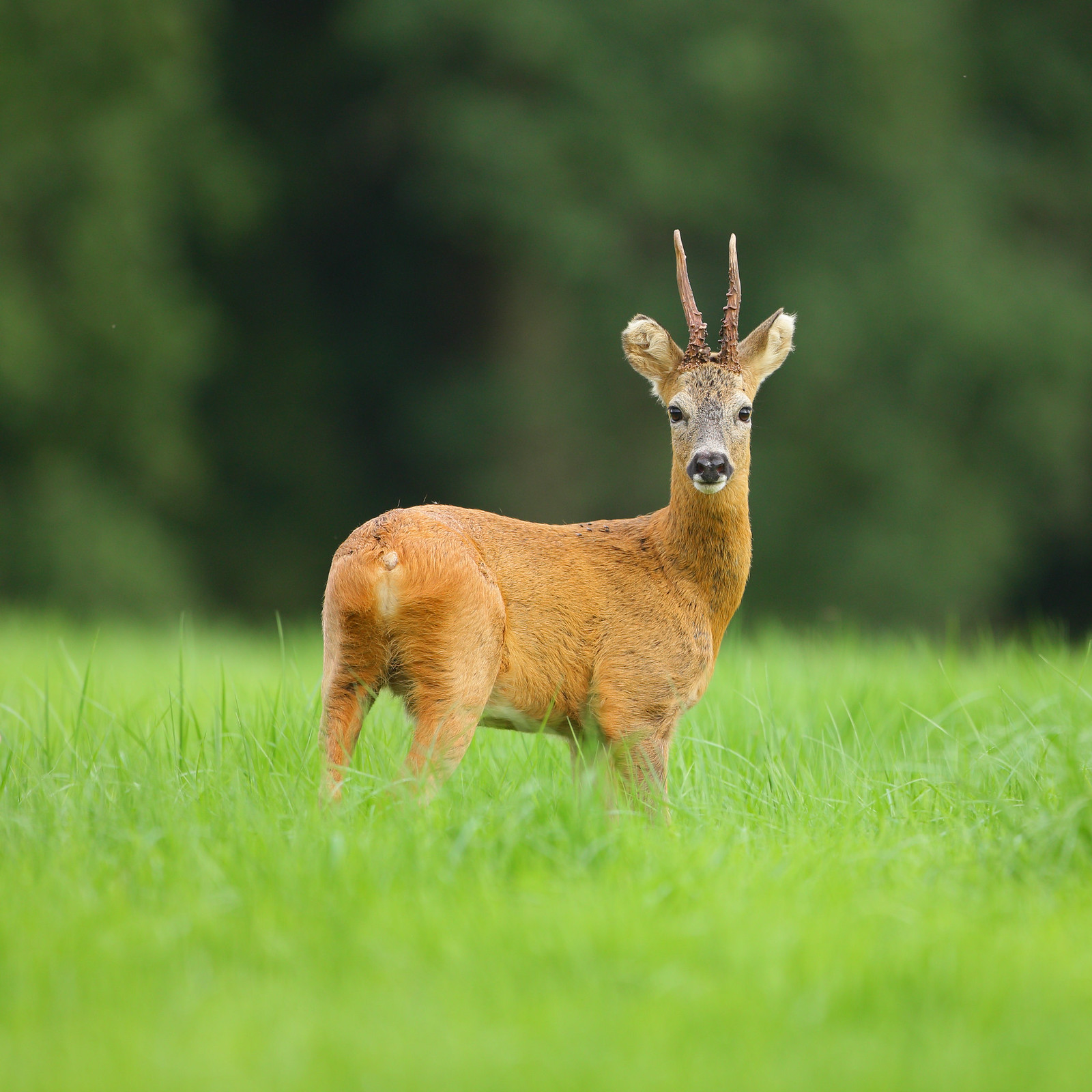
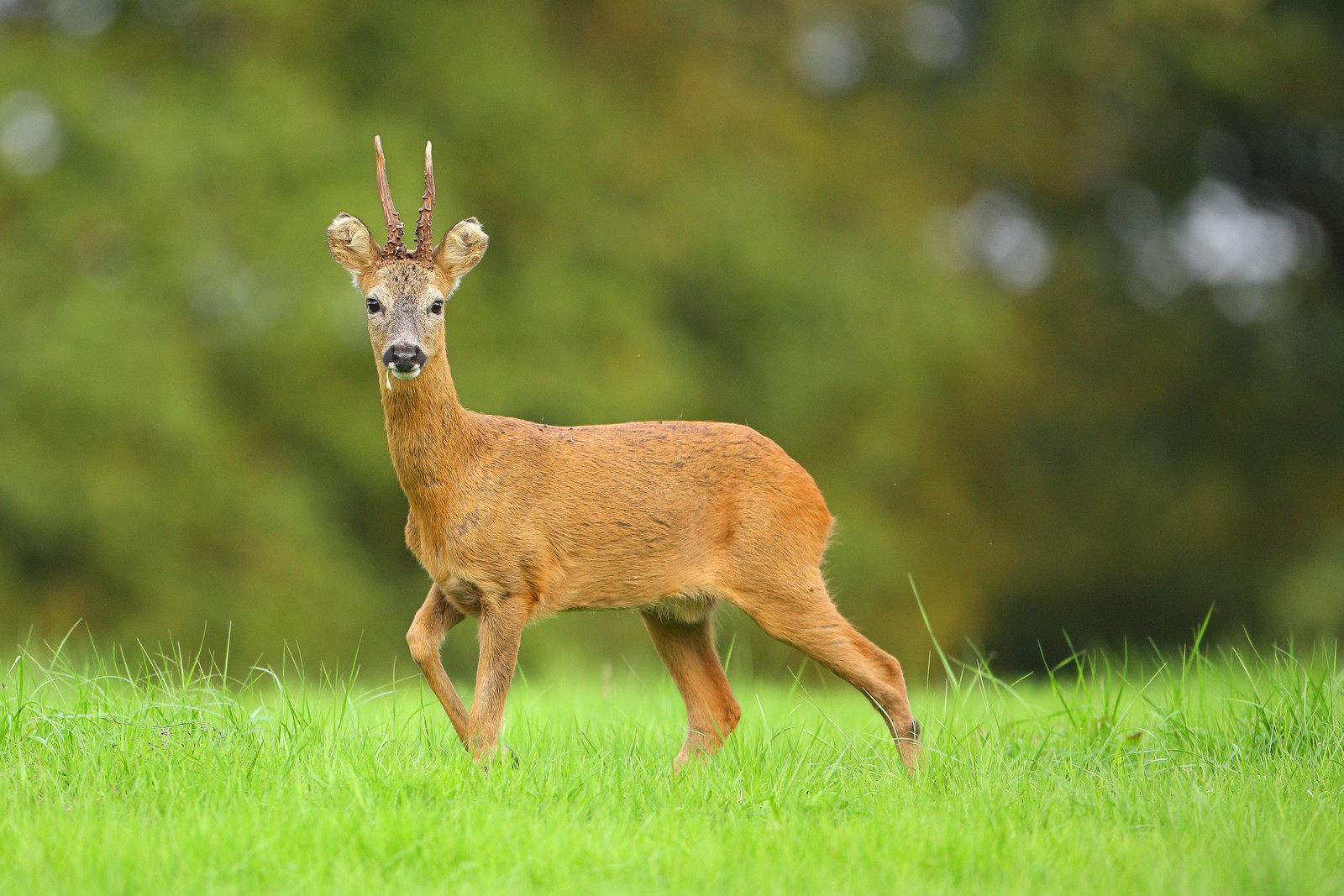
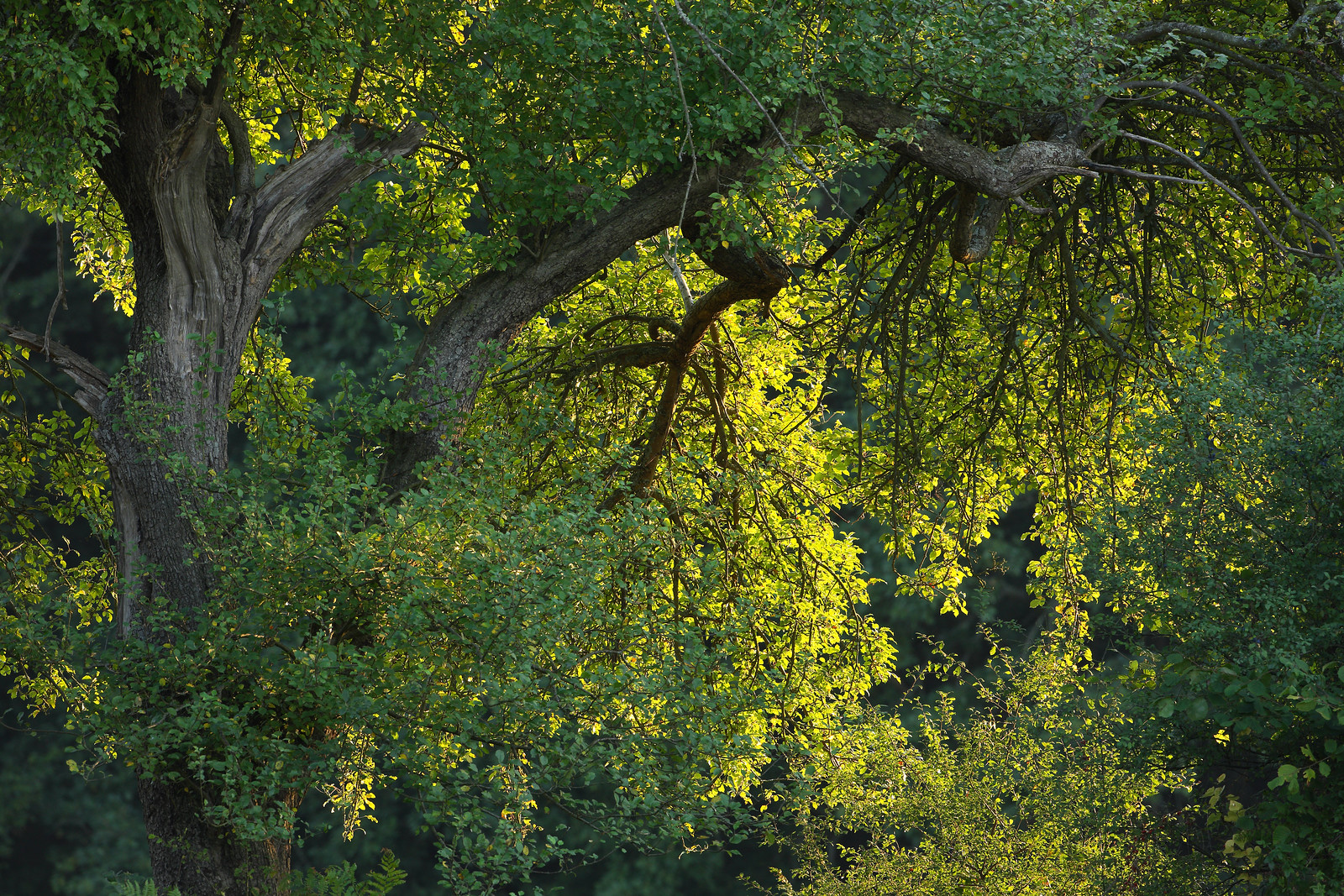
September began warm and mellow. Day length is similar to March, but September is now an extra summer month because of climate change. The rutting season has finished and the deer are gradually returning to the woods. I spotted the tolerant buck along a glade and he observed me for a few moments before making his way back into the fields. The buck has a strong preference for sitting down and it was almost as if he was waiting for me, when I spotted his expressive face staring right back at the field edge. A family came walking through the field, prompting him to move, but just a few minutes later, I spotted him again, sitting down, doing nothing at the opposite end of the field. His idea of fleeing danger is to calmly walk to another spot and sit down in the grass. Most wildlife photographers use concealment methods when stalking deer, but I prefer to build trust in plain sight. Deer would not normally expect a predator to make an approach without even attempting to hide itself, so it's possible that my hiding in plain sight convinced the deer not to worry. I took the head portraits in open view from just 20 metres. The buck was quite comfortable and relaxed.

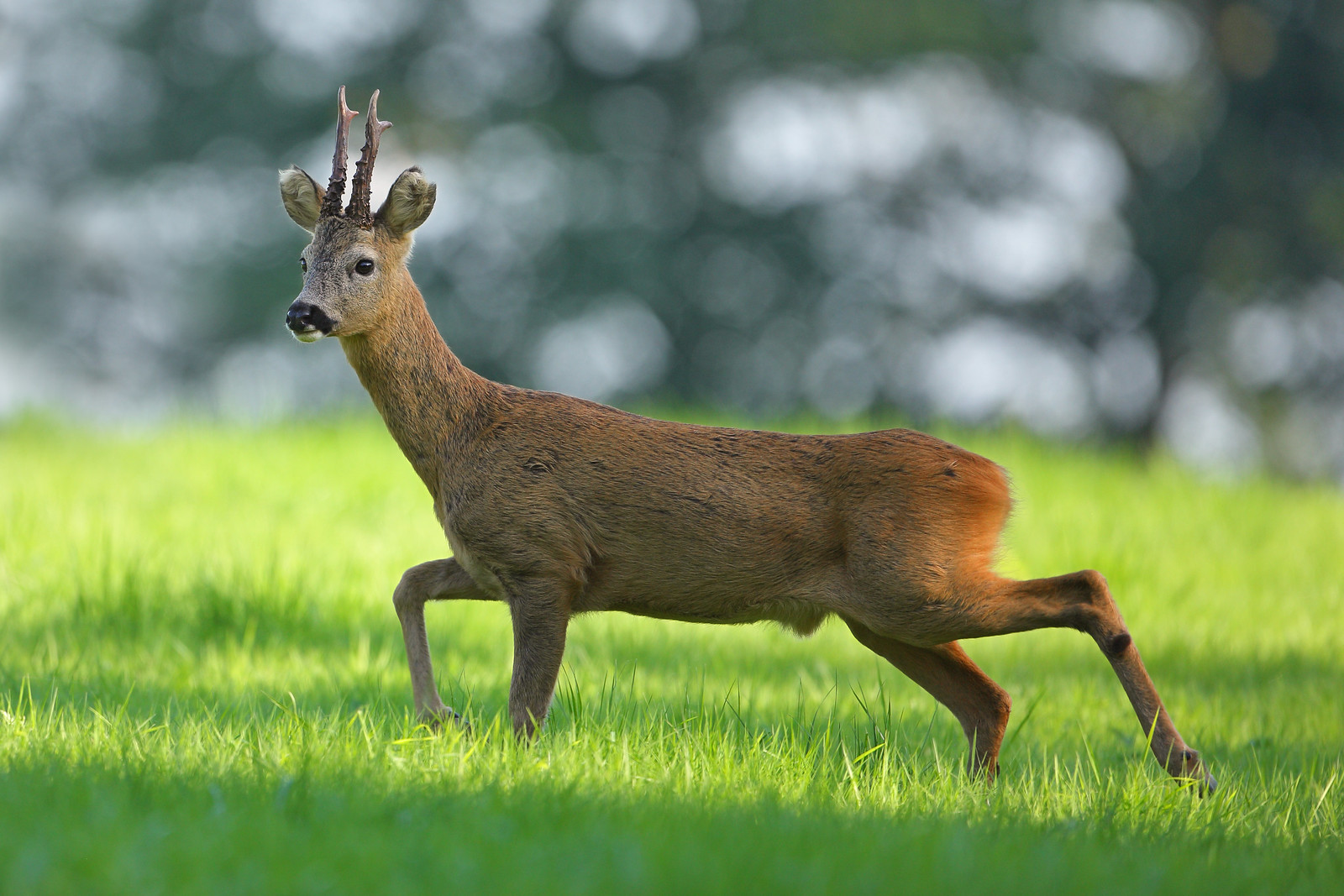
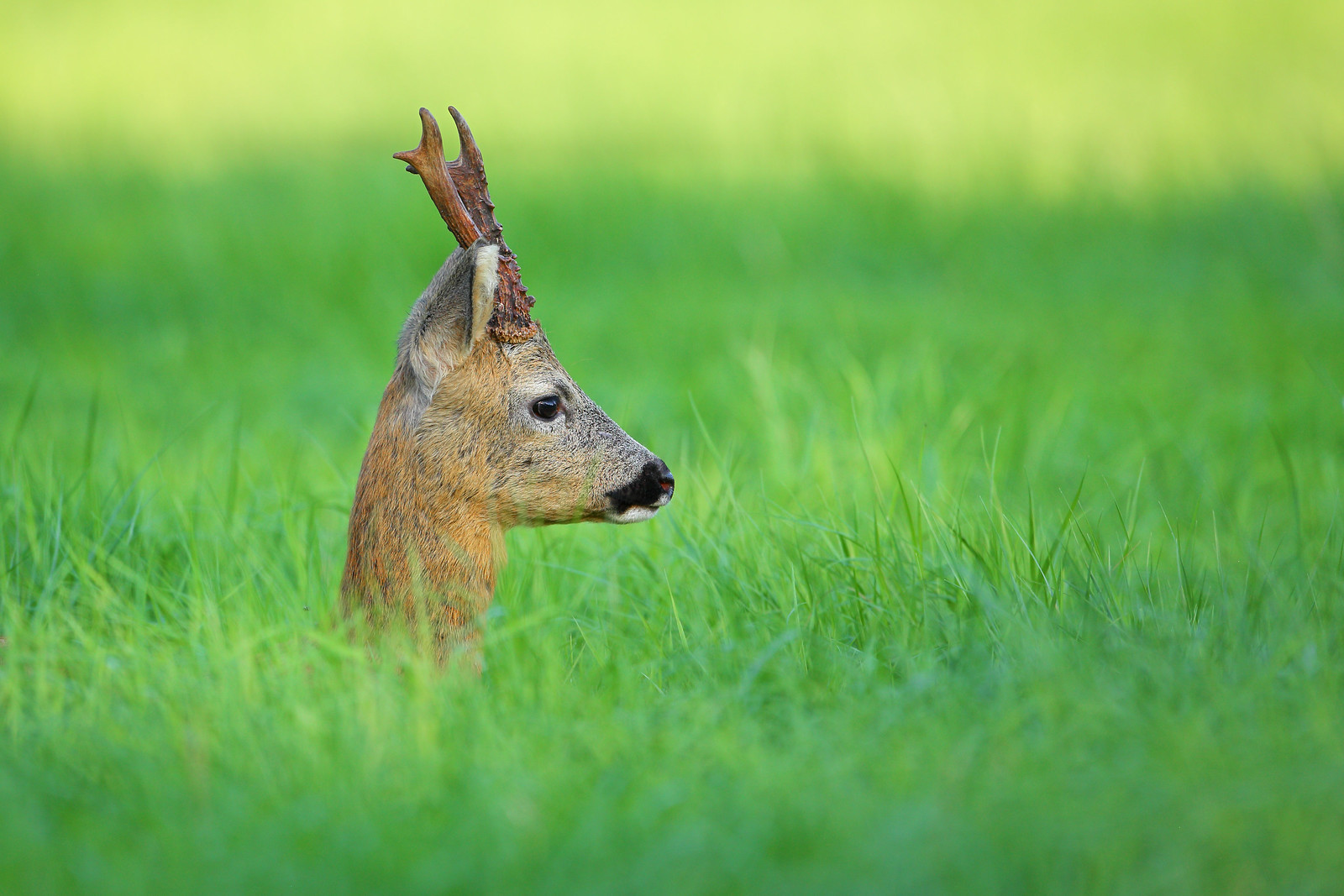
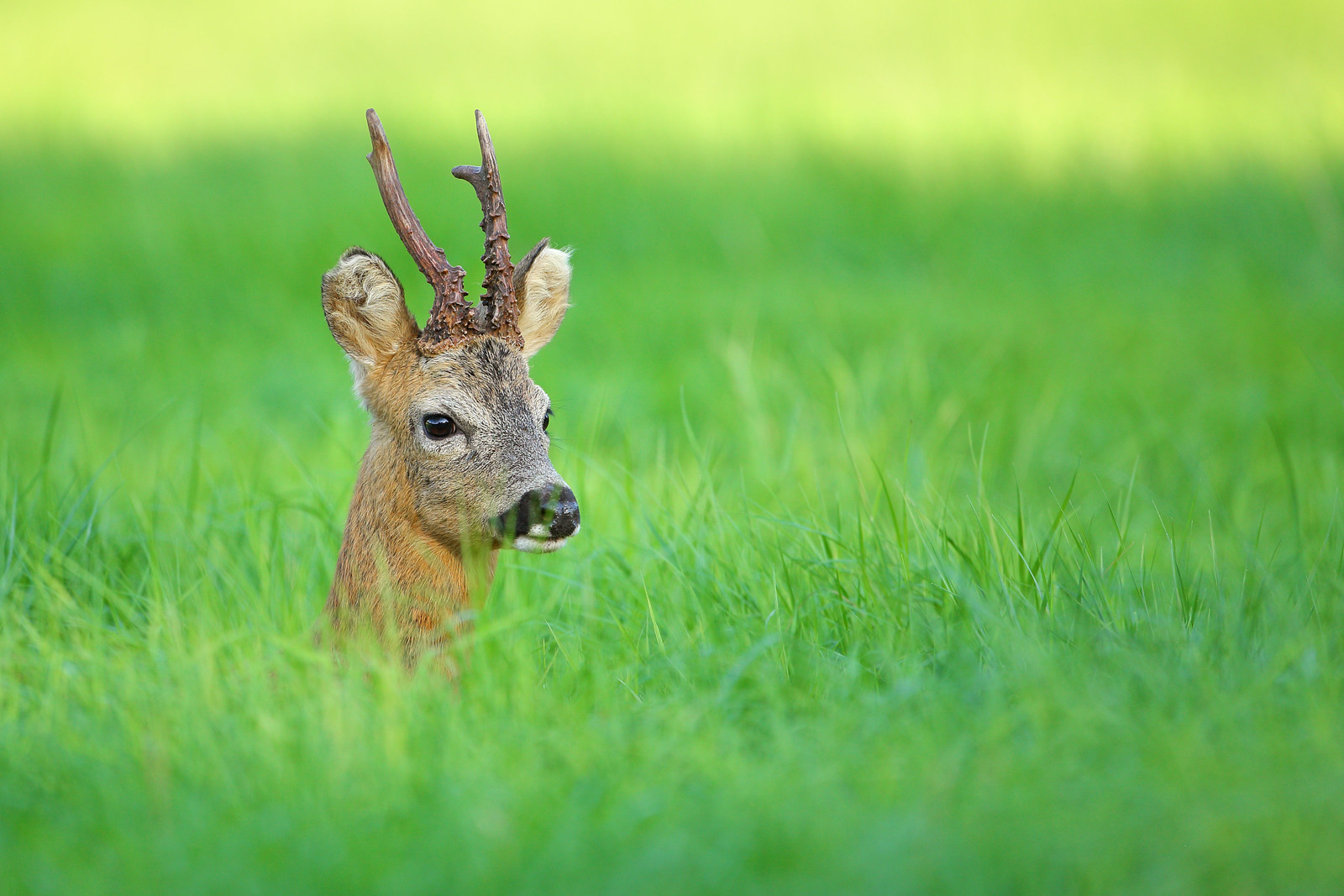
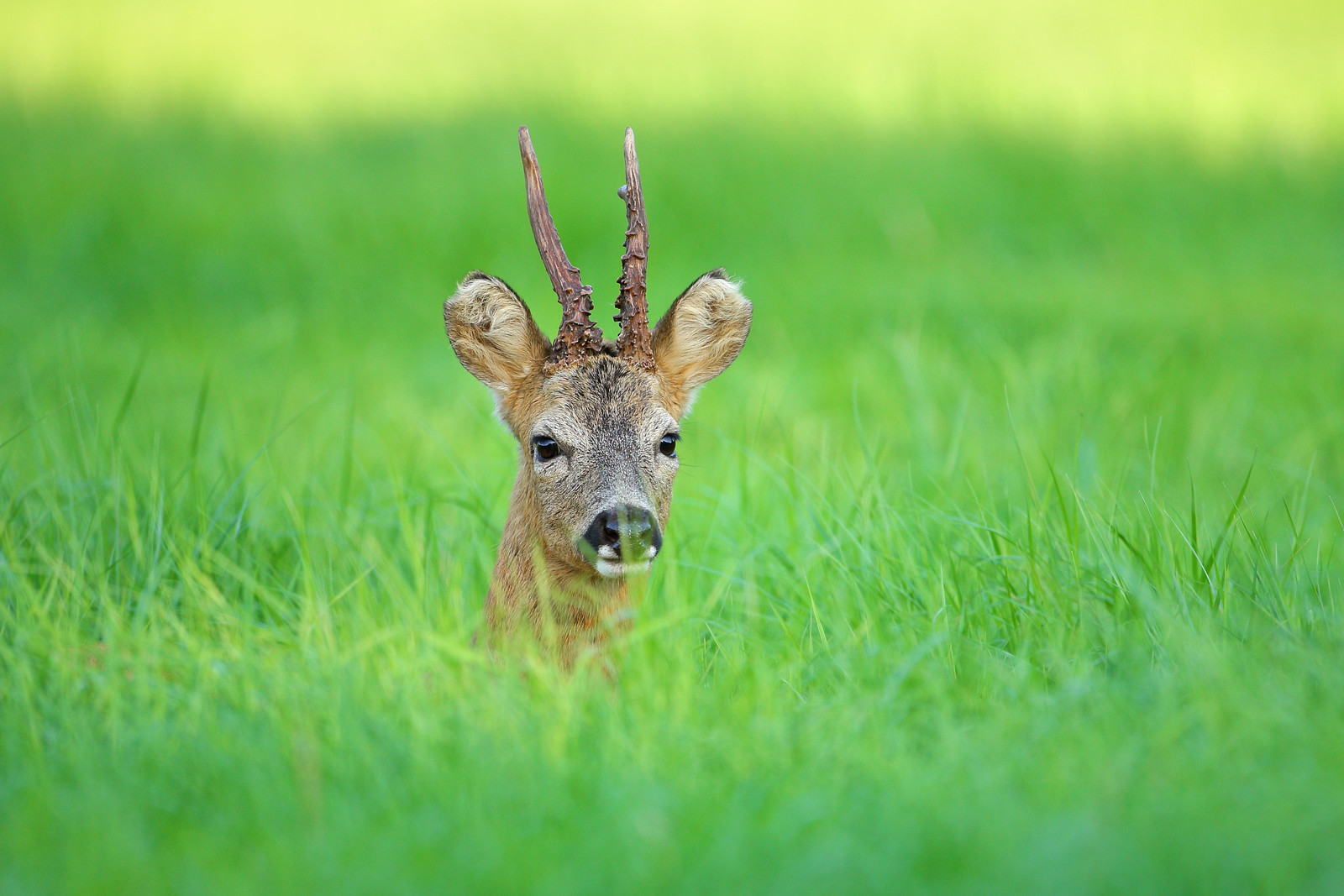

The Wolf and Eurasian Lynx have been hunted to extinction, meaning there are no natural predators to Roe deer left in the British Isles. With the forces of natural selection absent, unusually tolerant Roe deer can occasionally be found. I have been told by local people that the landowners don't cull deer and, if he
manages to avoid accidents or disease, the buck could achieve his
natural lifespan of seven years.
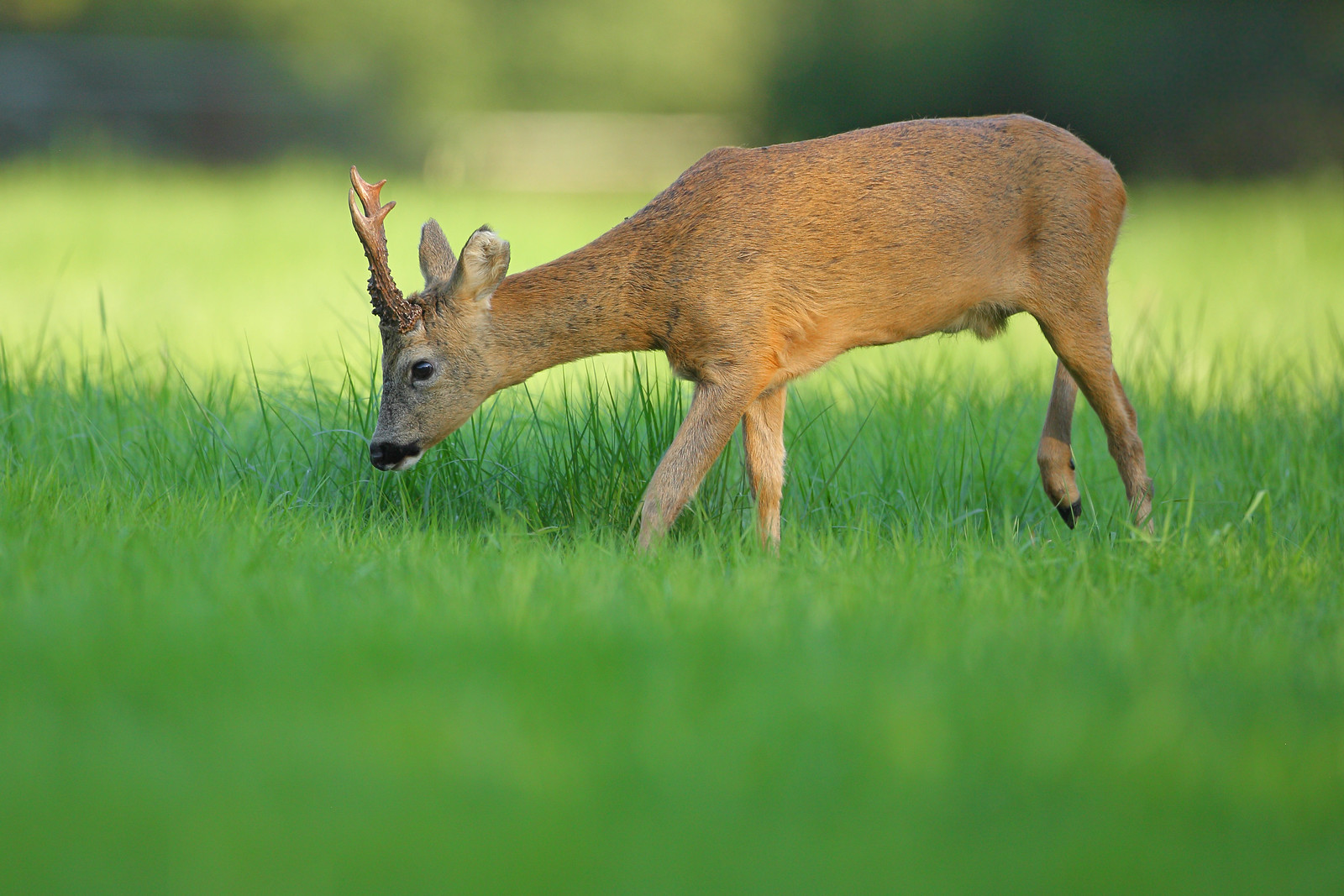
When feeding or resting in sunny weather, the buck follows the edge of shadows cast by trees. My theory is that glare from the sun reduces his vision, rendering him less able to identify either succulent plants or potential danger. Roe are very selective when grazing and won't just eat anything. Photography student work experience.
It became clear on September 3rd, that this would be my last visit for a while. The tolerant buck has left the field and returned to the woods. He will be back, as Roe deer like to revisit the place they were born. It was a beautiful, warm September afternoon and all I could do was reflect on how privileged I was to spend time with such wonderful wild animals over one month. I can't be accused of wasting any opportunities afforded by the brilliant summer of 2018. I've done so much, that the buttercup meadows of June are starting to feel like a distant memory. I'll be reviewing my favourite photos of the summer in due course, but up next is a story about Roe deer as they adapt to life in autumn and early winter. In the meatime, I'll be popping down to the curry house for a much earned Vindaloo and a beer or twelve.
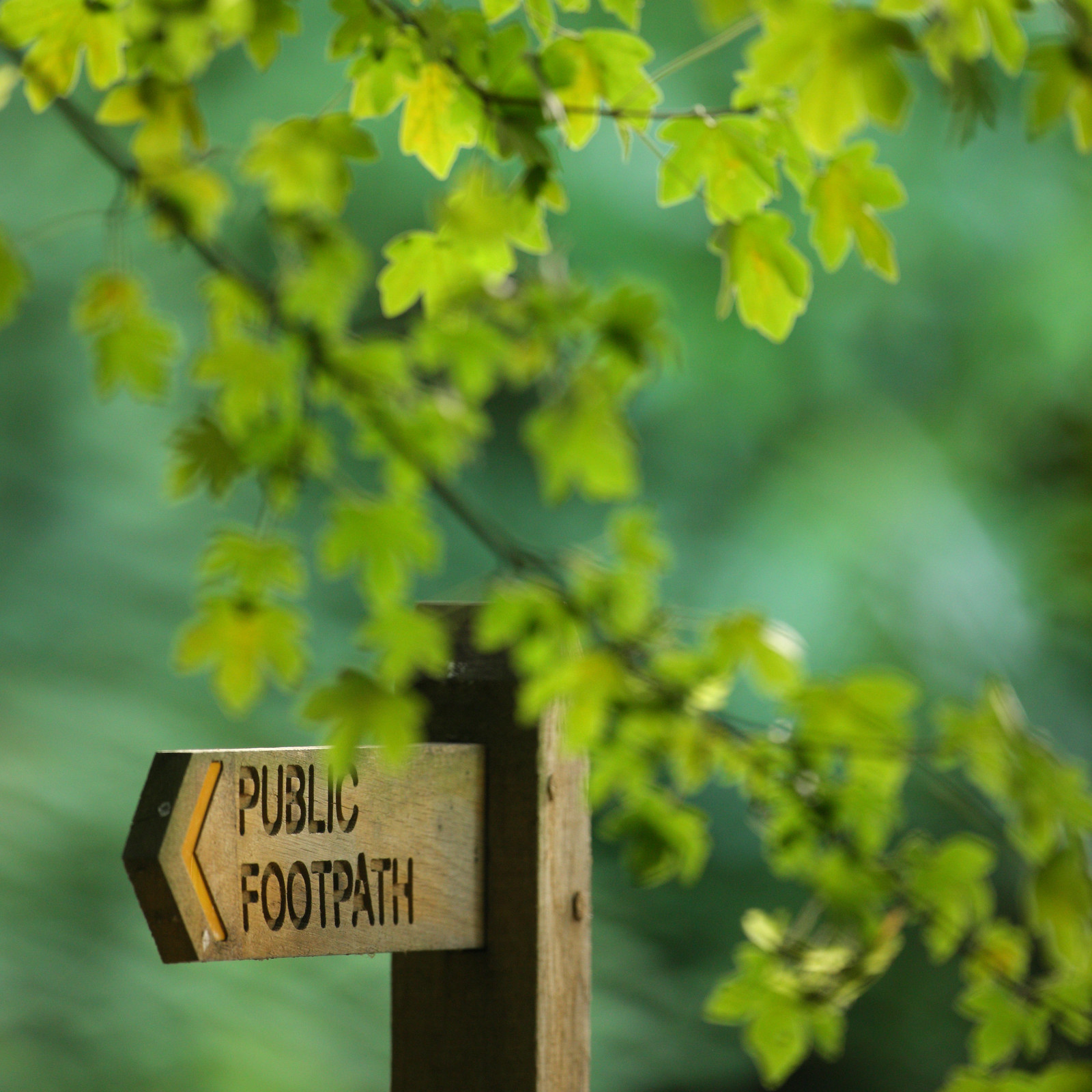
Comments